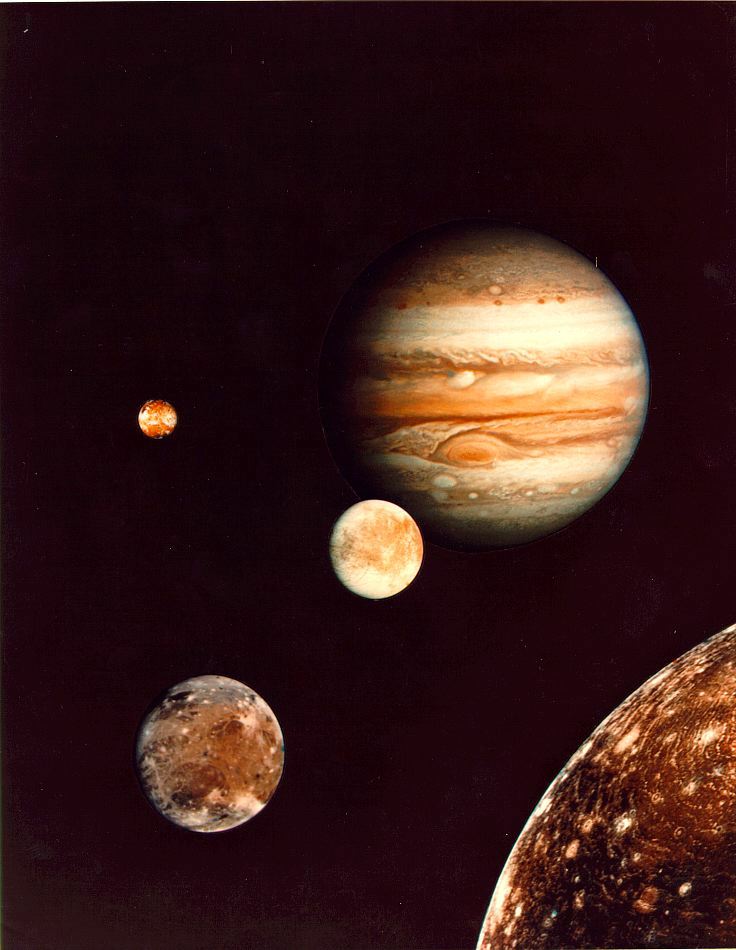 |
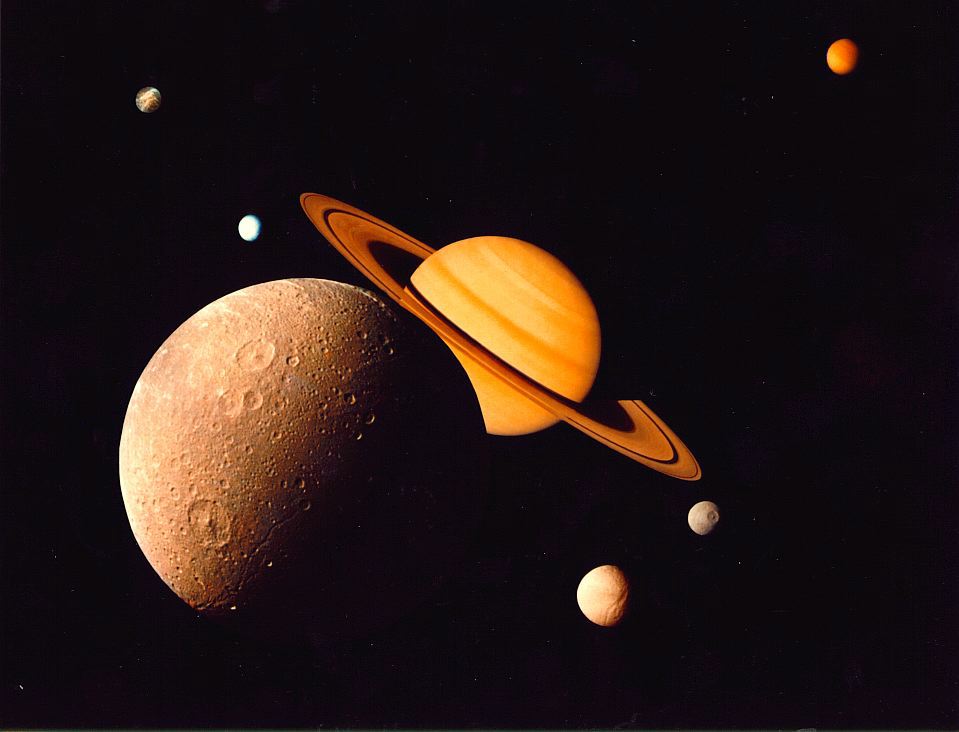 |
 |
 |
In the early 1600s Galileo Galilei (1564-1642) made extensive observations with one of the first astronomical telescopes. Among his discoveries were the four large moons of Jupiter, the Galilean moons. The smallest moon, Europa, is comparable in size to the Moon, the largest, Ganymede, is larger than Mercury! The Galilean moons have densities that decrease with increasing distance from Jupiter. Io and Europa are rock/ice objects and Ganymede and Callisto are roughly half rock and half ice. The large amount of ice in these moons is understandable (why?) and shows that they contain large amounts of water.
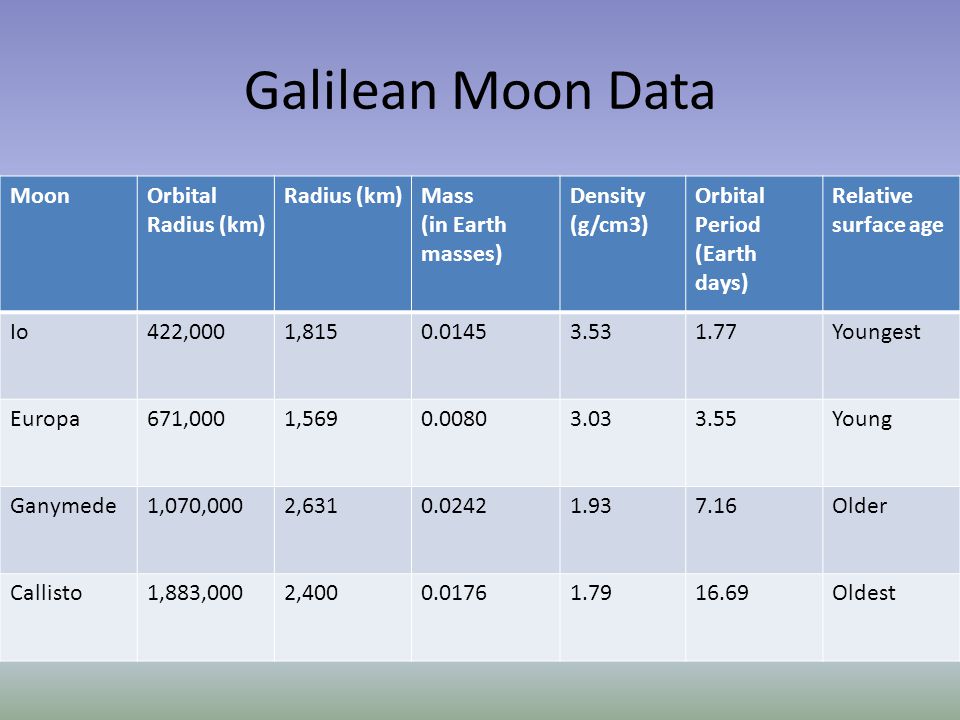 |
These are all moons (roughly the size of Mercury and smaller). They are thusly expected to have cold interiors and to not have active geologies. Surprisingly, some of the Galilean moons are among the most geologically active objects in our Solar System. Below are pictures of Io showing a plume in eruption and views of the face of Io. Io is the most volcanically active body in our Solar System.
 |
 |

|
Why is Io geologically active?

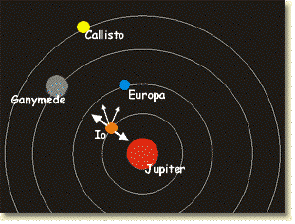


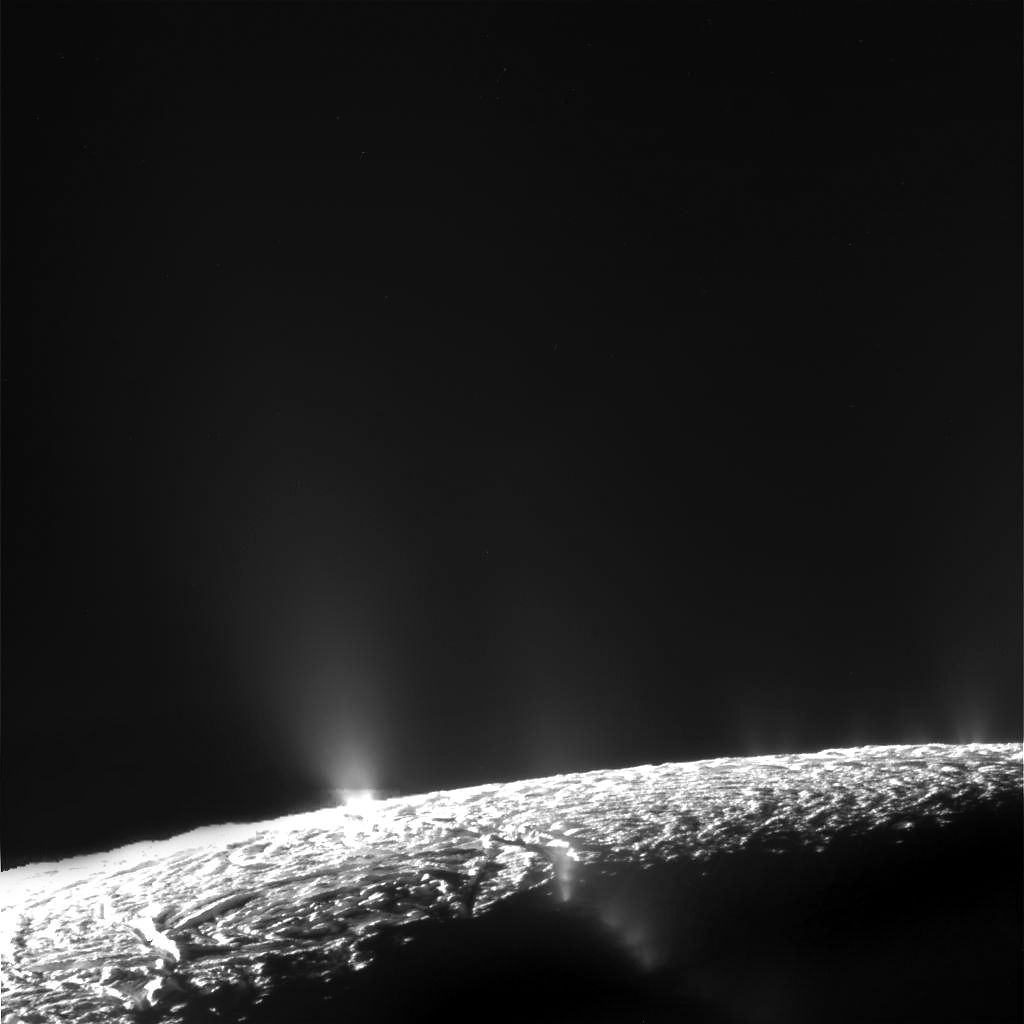
|